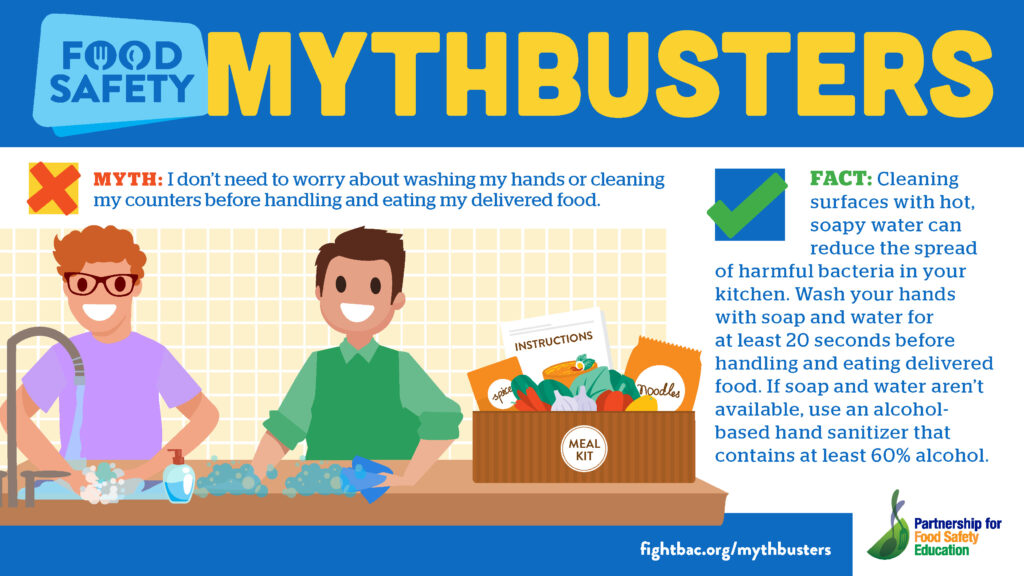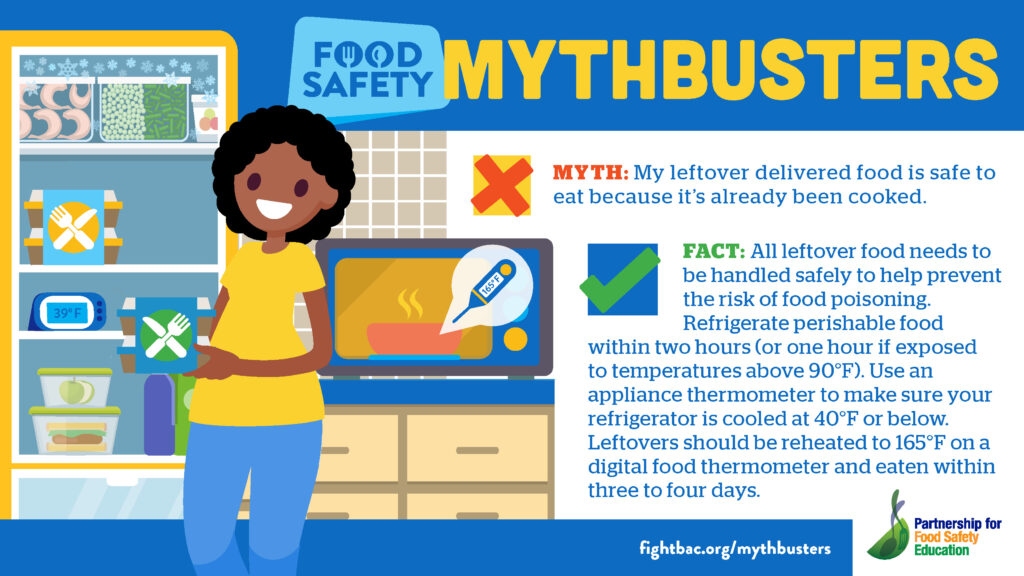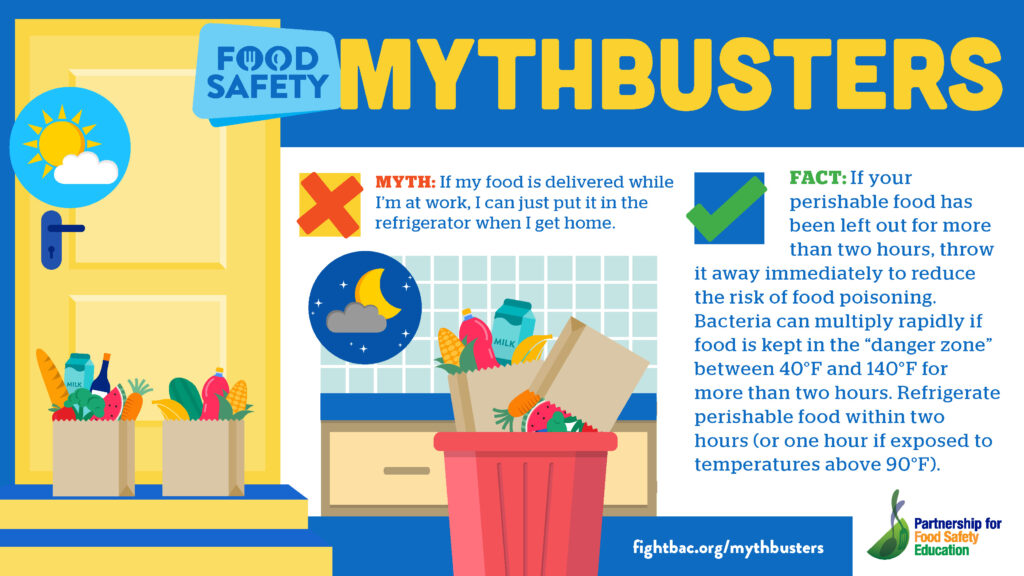Common food safety myths originate from the misapplication of science, family tradition, or misinformation on social media. The Partnership created these social media graphics for consumers and educators to help debunk common home food safety myths. Brush up on safe food handling steps with these food safety Mythbusters!
Flour and other baking ingredients may contain harmful bacteria that are only killed during the cooking process. Children are especially vulnerable to serious foodborne illness.
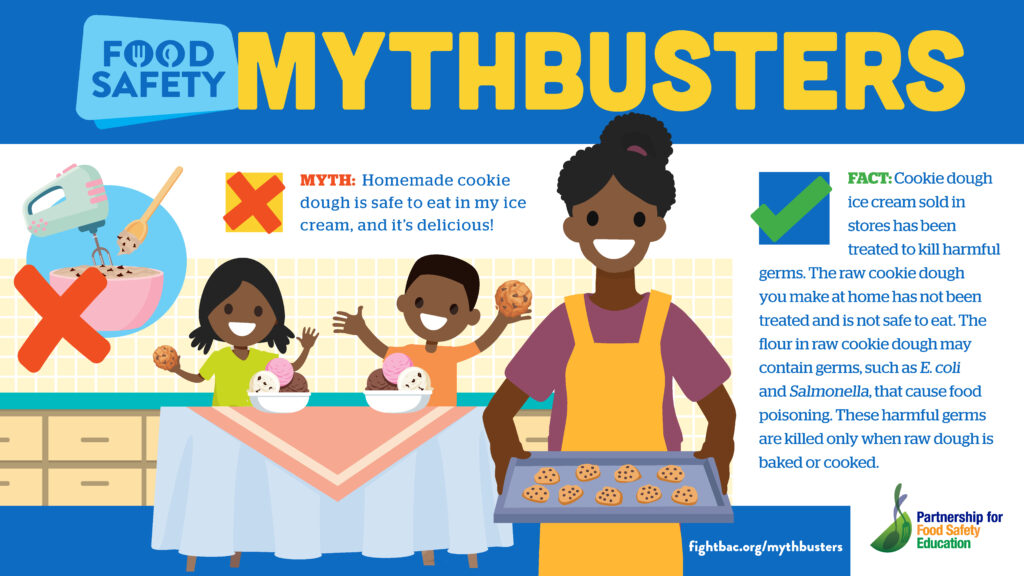
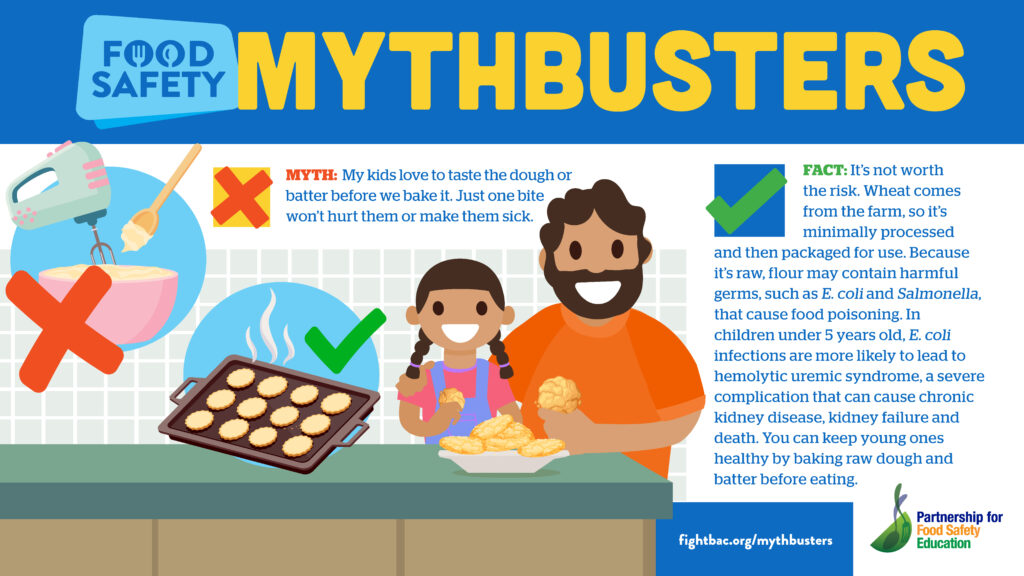
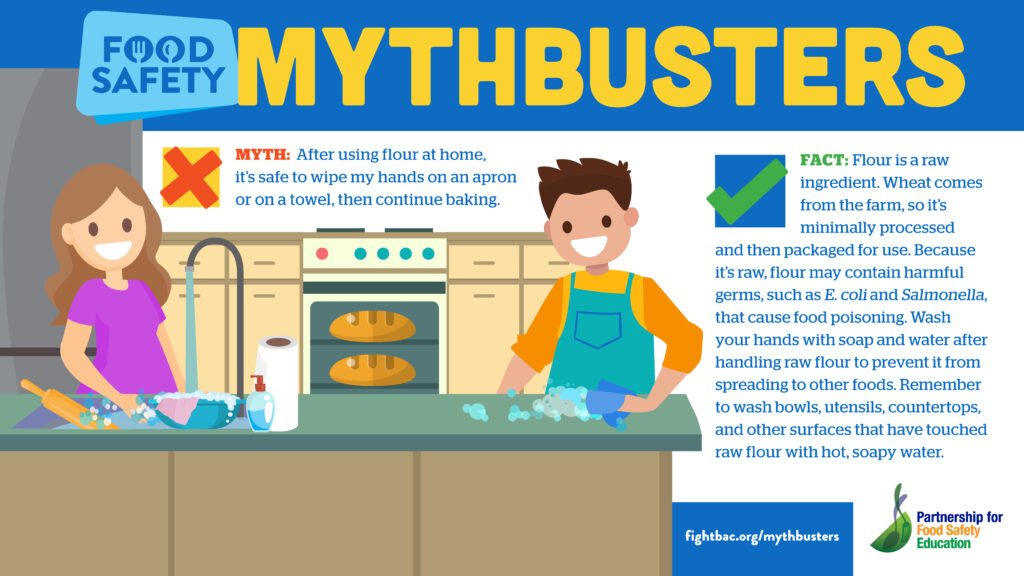
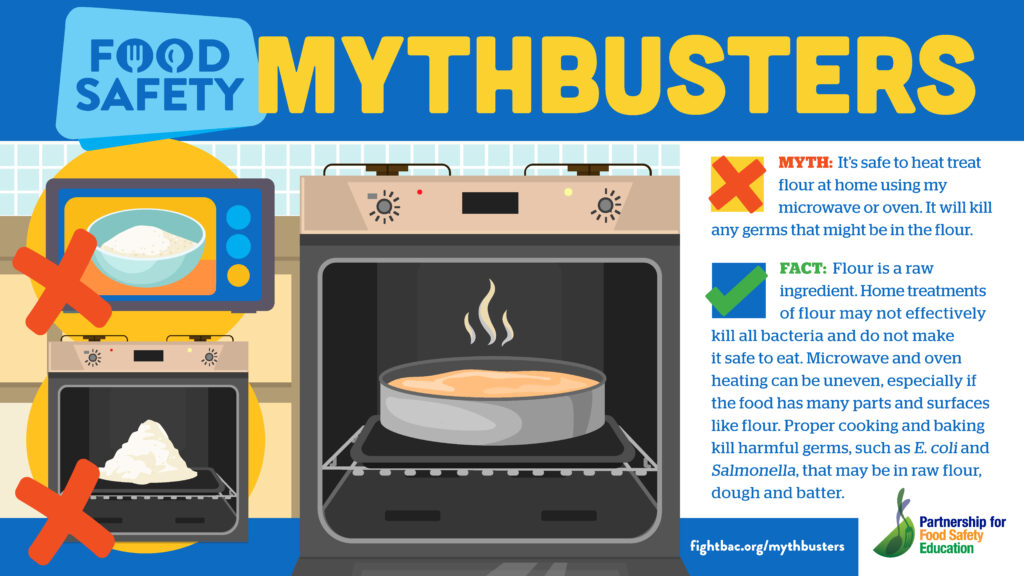
Harmful bacteria can be spread throughout the kitchen and get onto hands, cutting boards, utensils, counter tops and food. Follow these food safety practices to keep you and your loved ones healthy.
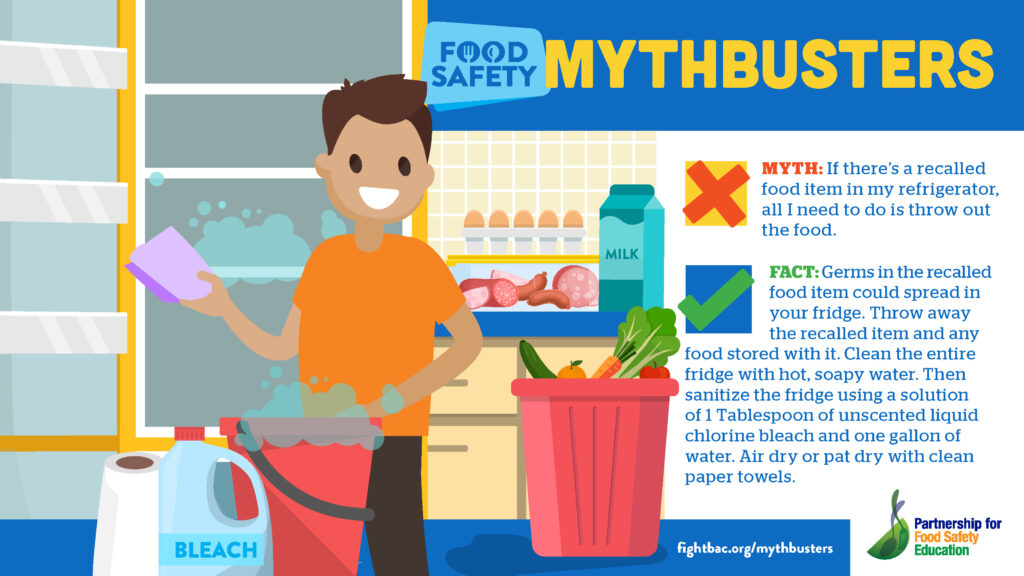
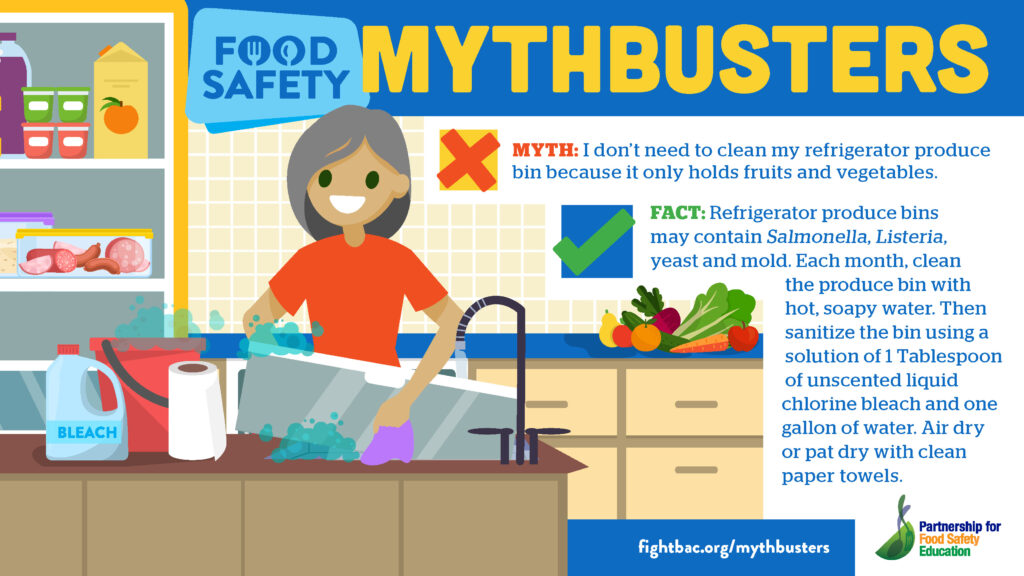
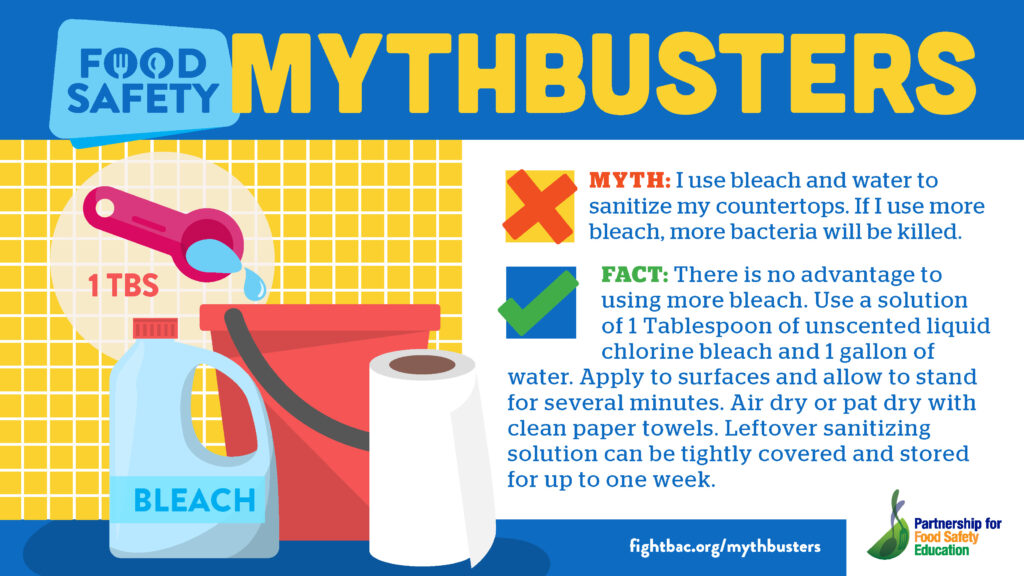
Children younger than age five are at an increased risk for food poisoning and related health complications because their immune systems are still developing. Follow these food safety steps to keep babies and toddlers healthy.
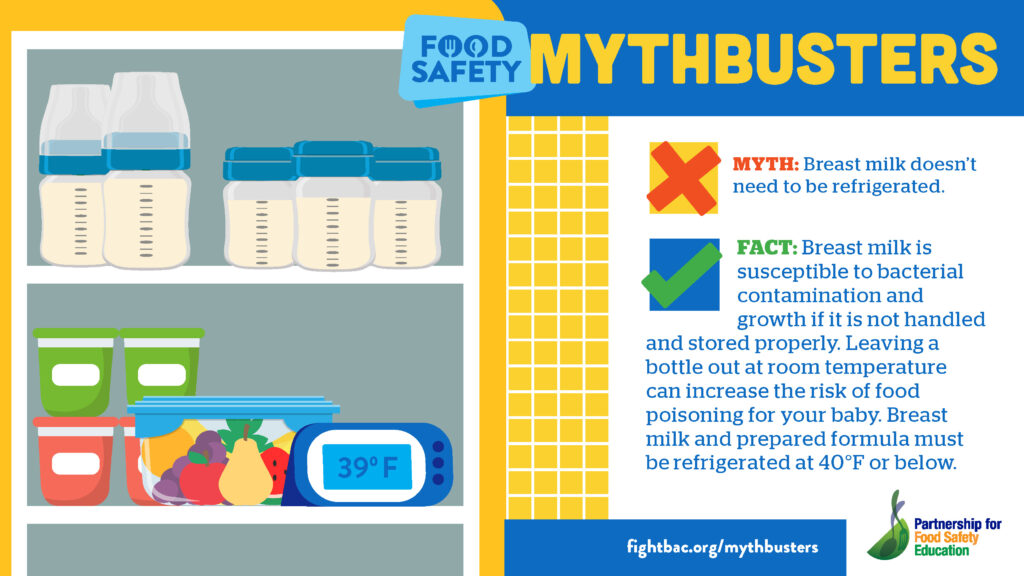
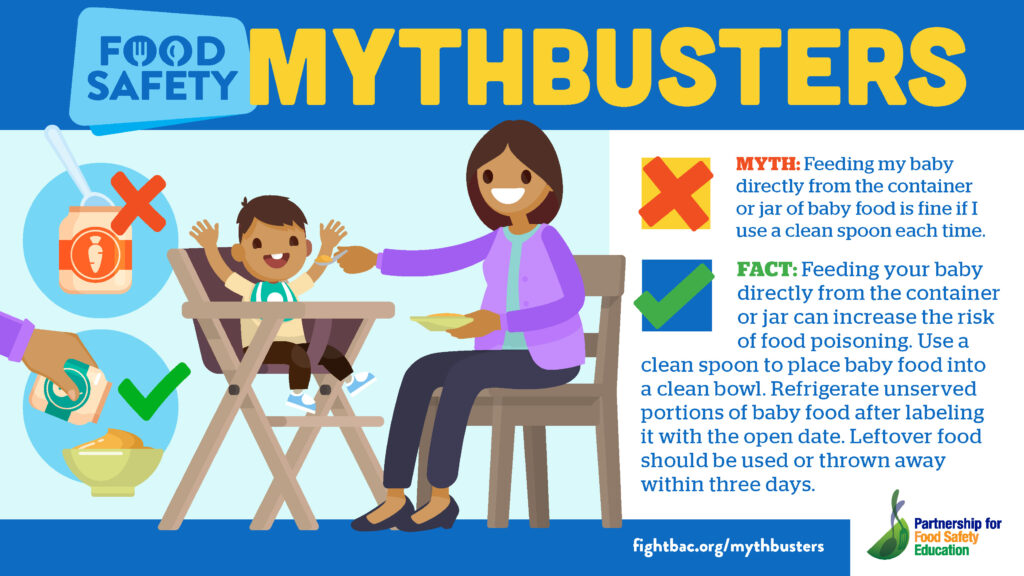
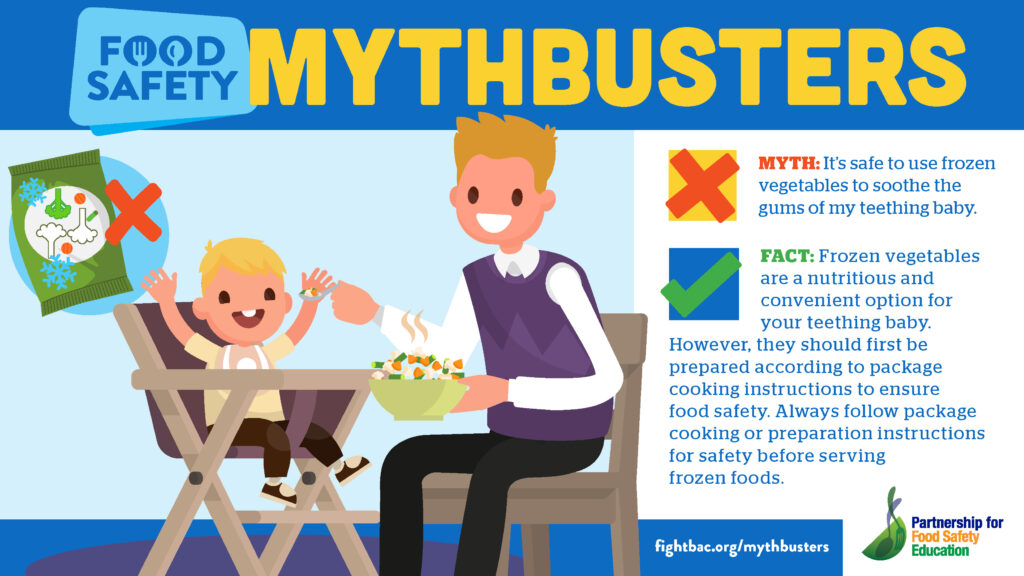
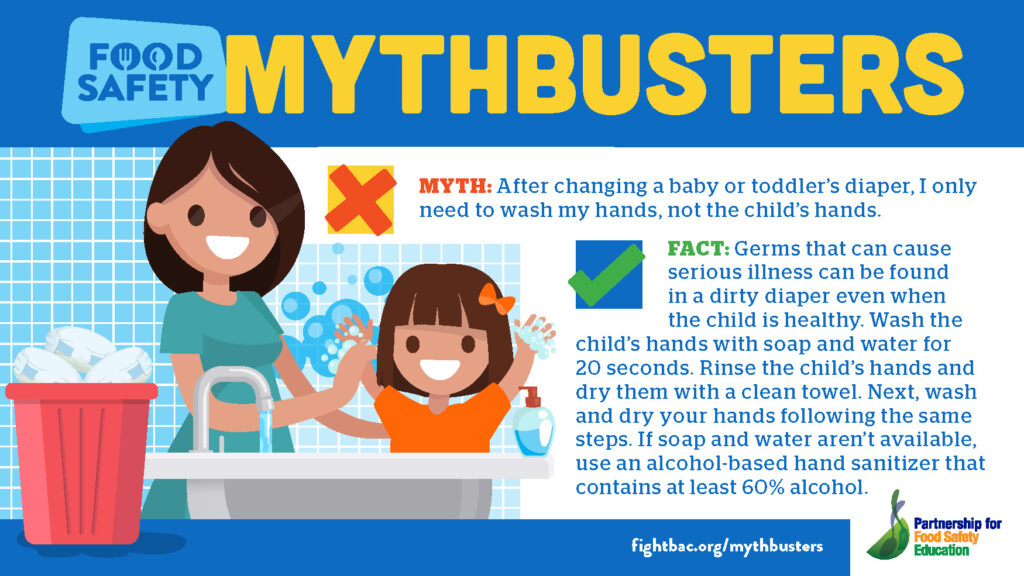
Refrigerate foods quickly because cold temperatures slow the growth of harmful bacteria. Keep a constant refrigerator temperature of 40°F or below to reduce the risk of food poisoning.
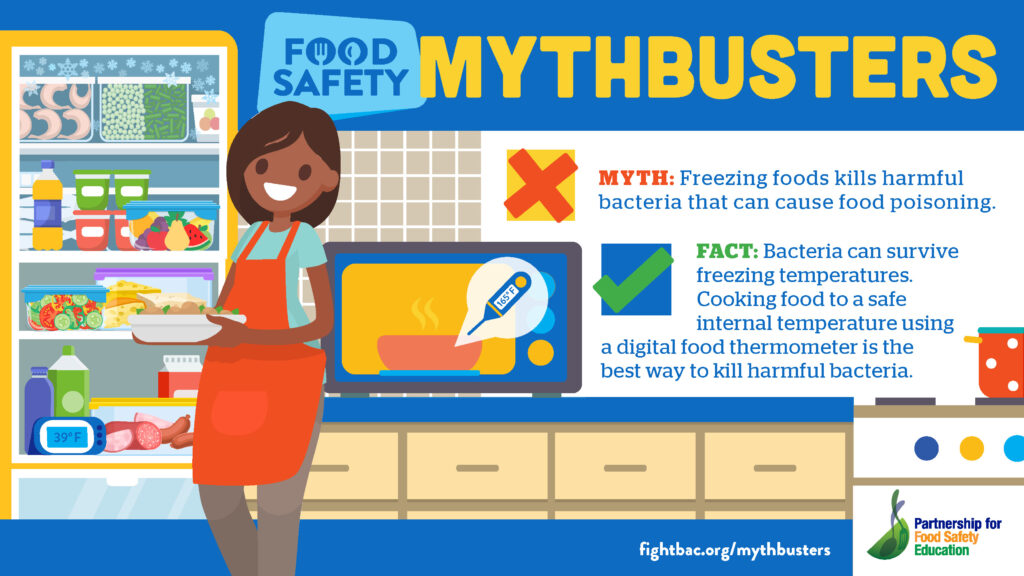
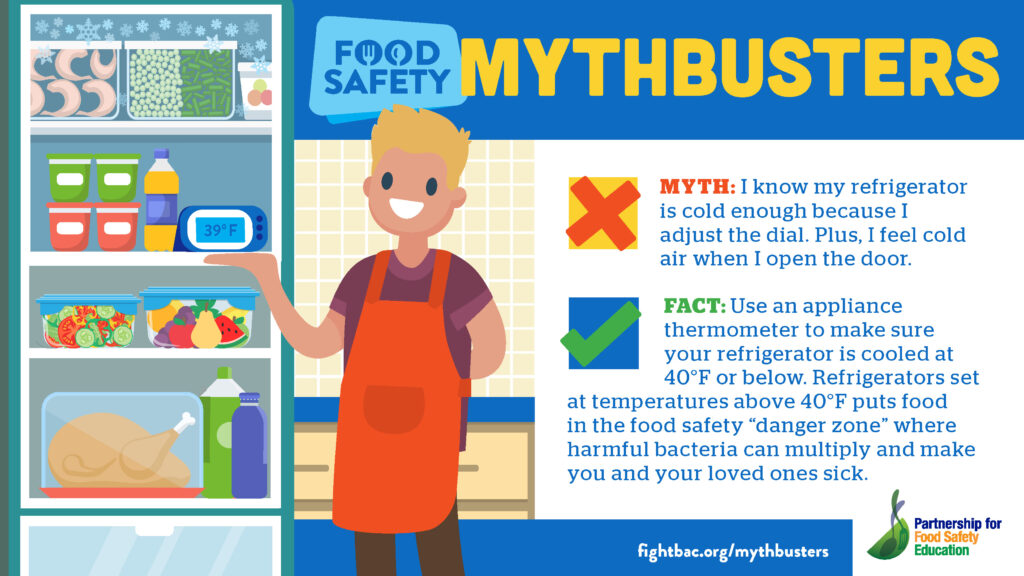
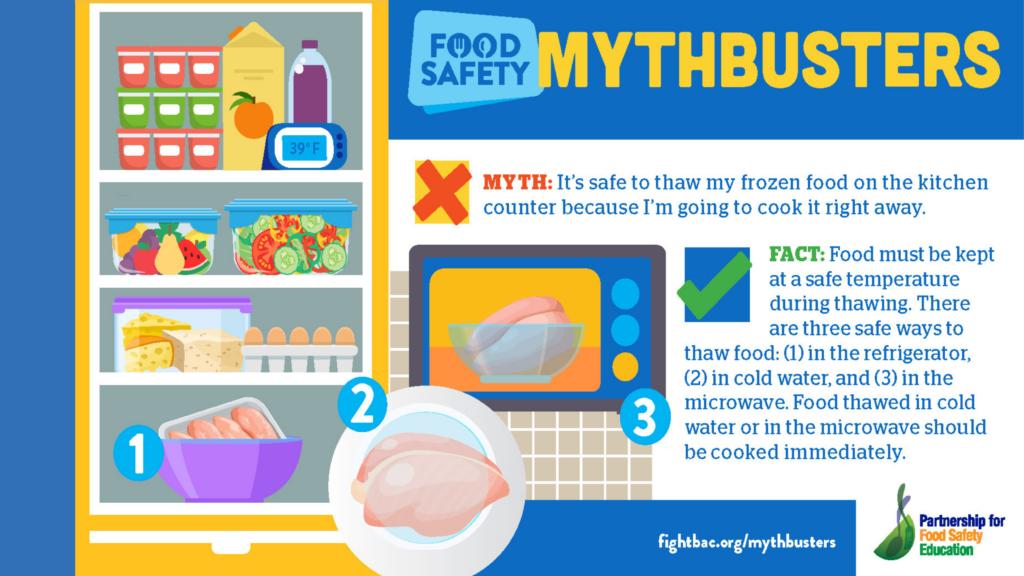
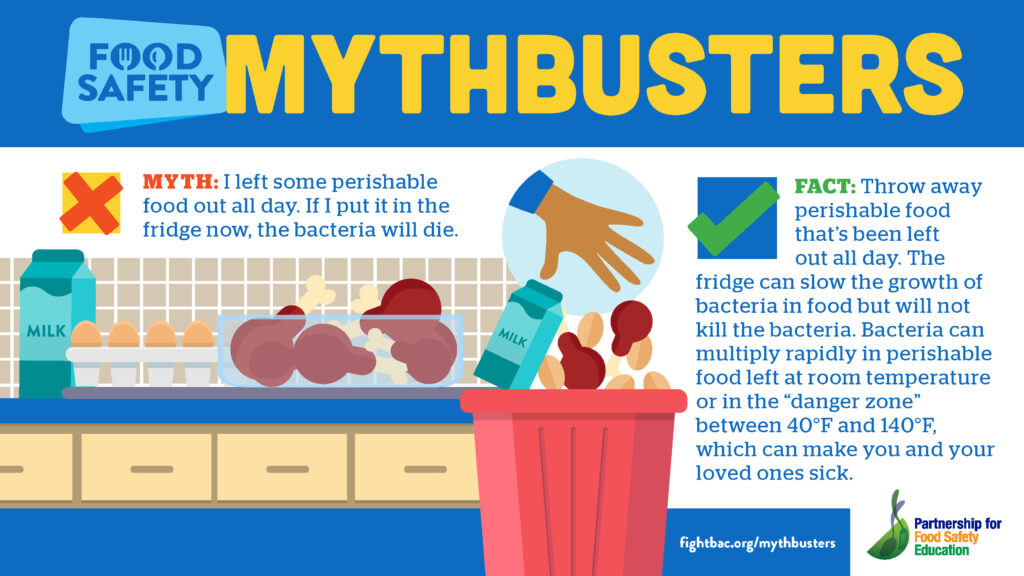
Many households enjoy cooking frozen and ready-to-eat convenience foods in a microwave oven. Follow these food safety steps when using a microwave.
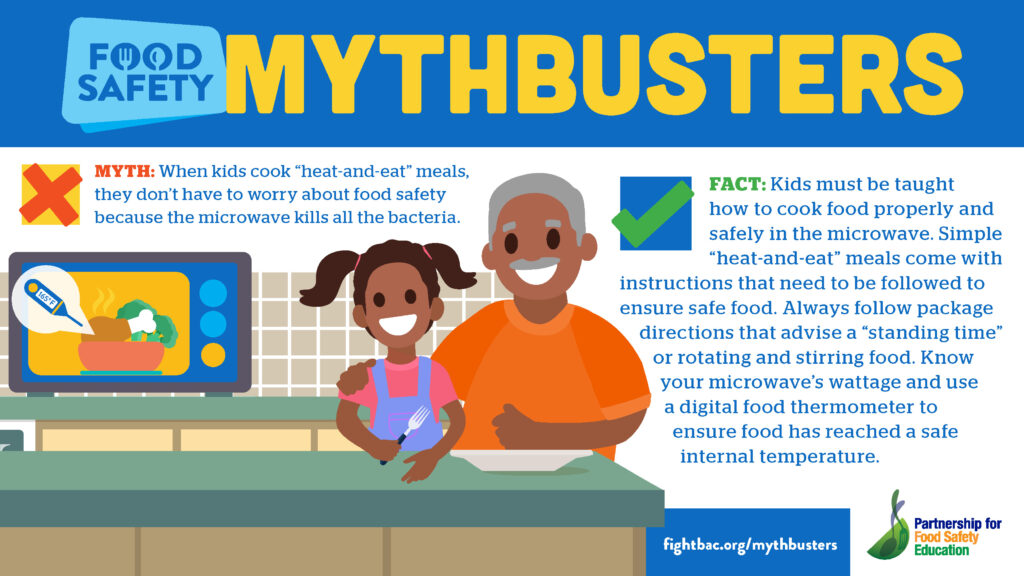
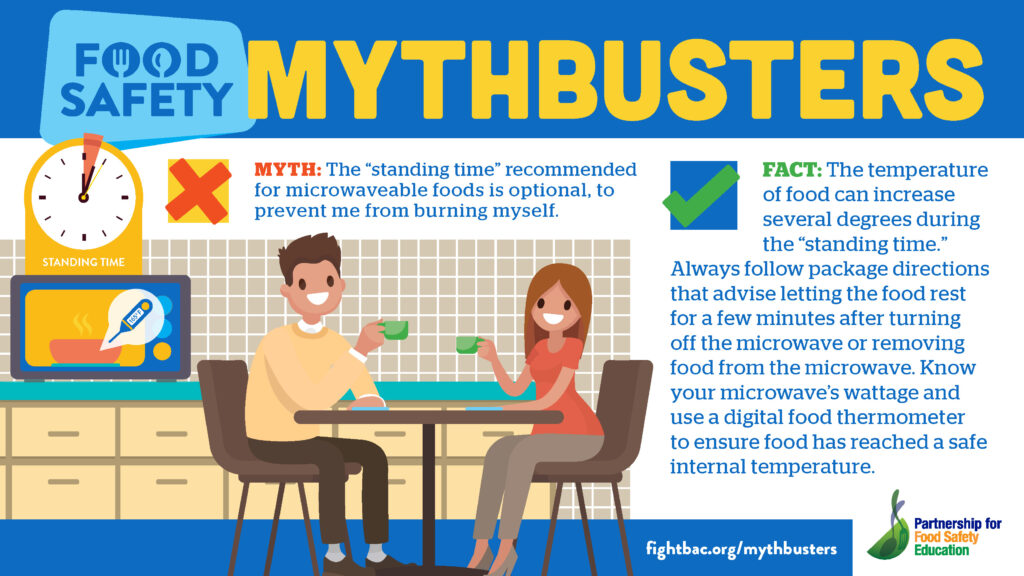
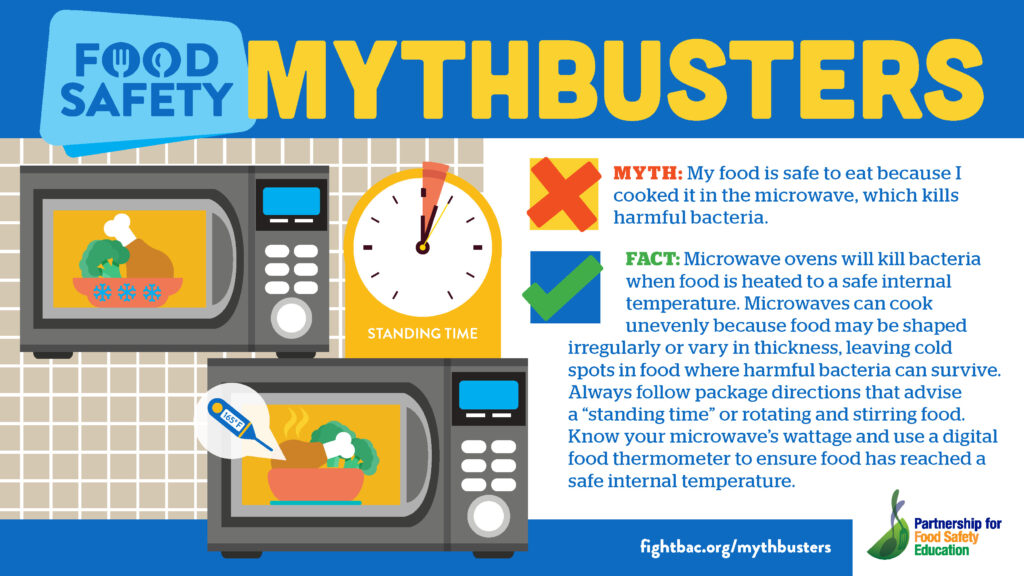
Fruits and vegetables are an important part of a healthy diet, but it’s important to select and prepare them safely. Follow these safe handling tips to protect yourself and your loved ones when enjoying fresh produce.
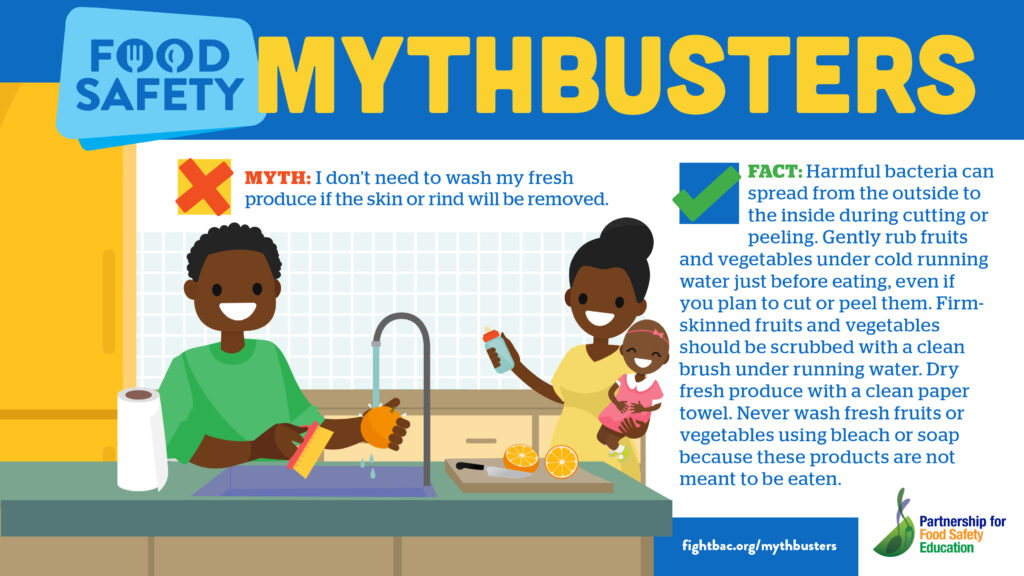
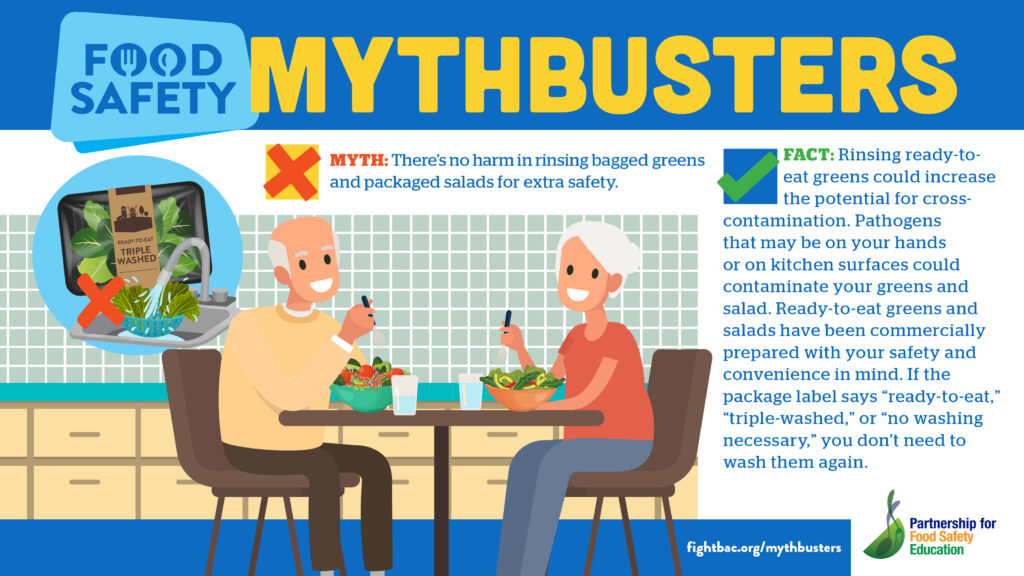
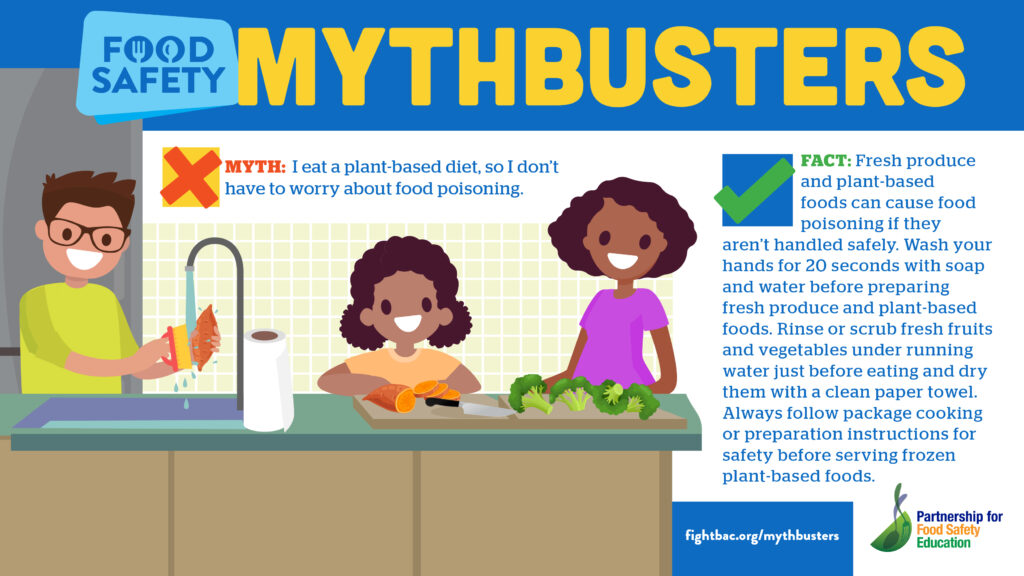
Raw meat and poultry can spread harmful germs to fresh produce and ready-to-eat foods — unless you keep them separate. Always cook meat and poultry until it reaches a safe internal temperature on a digital food thermometer.
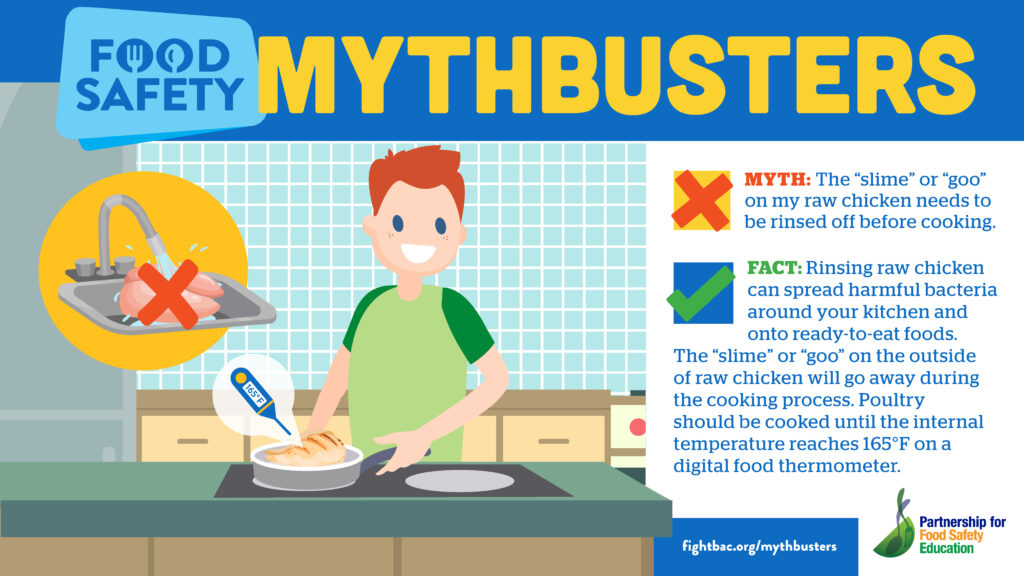
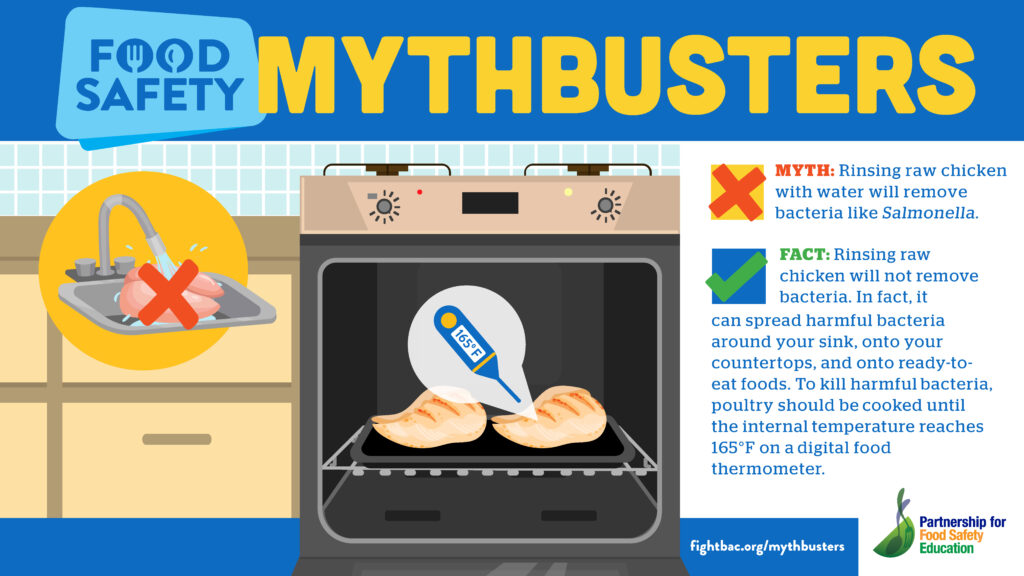
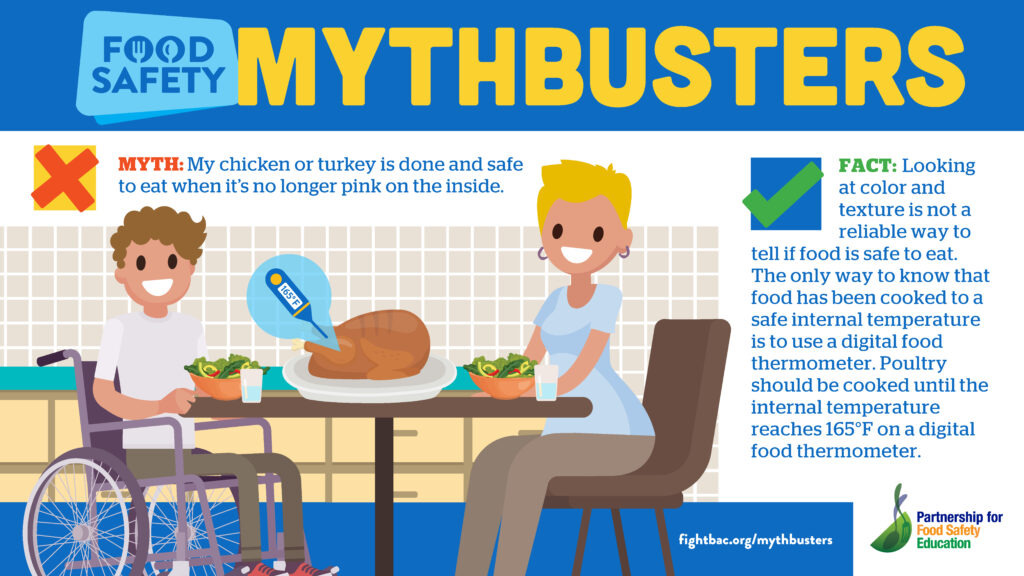
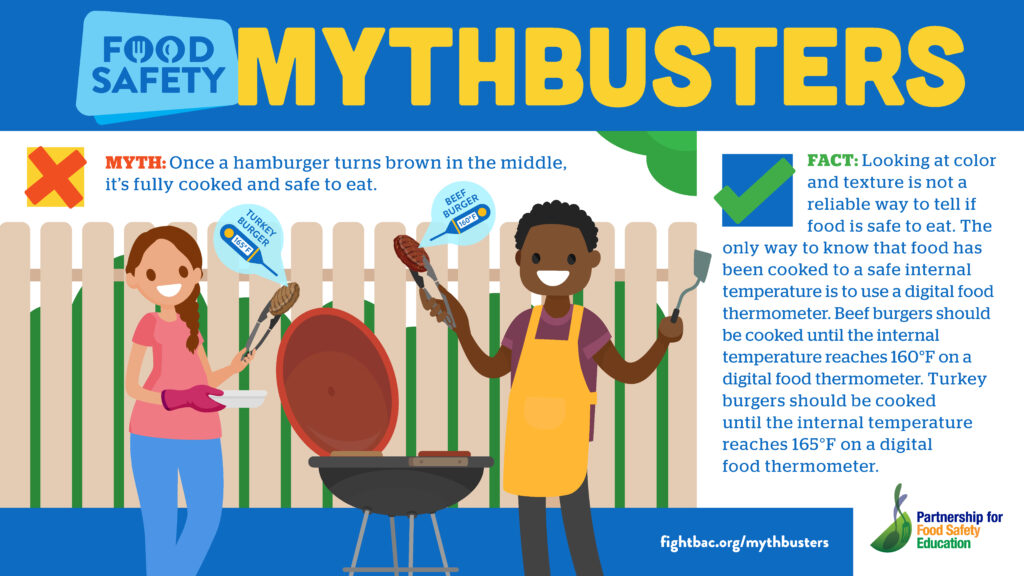
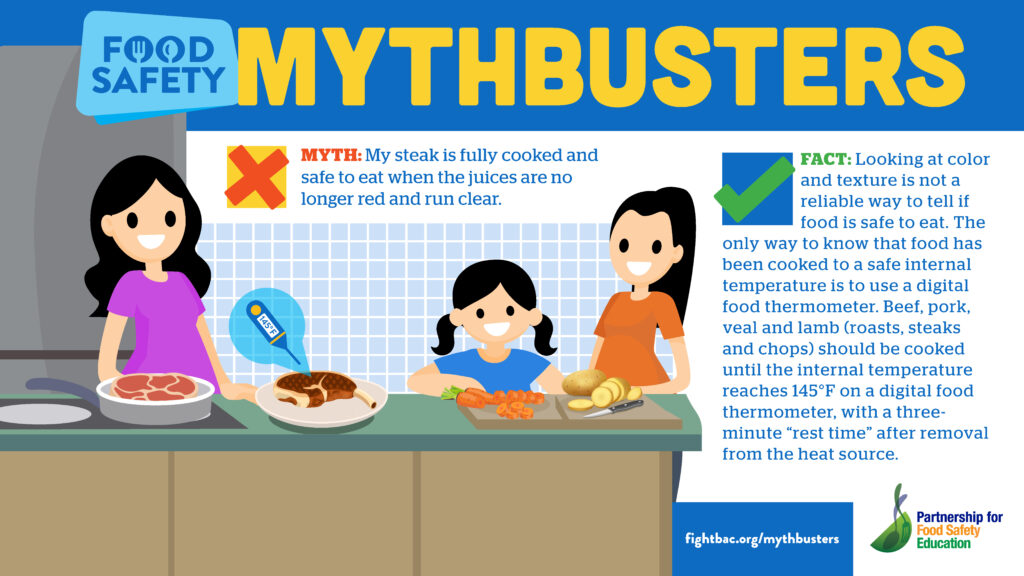
As the way we receive food changes, the core food safety practices remain essential to protecting our health and the health of those we love.
